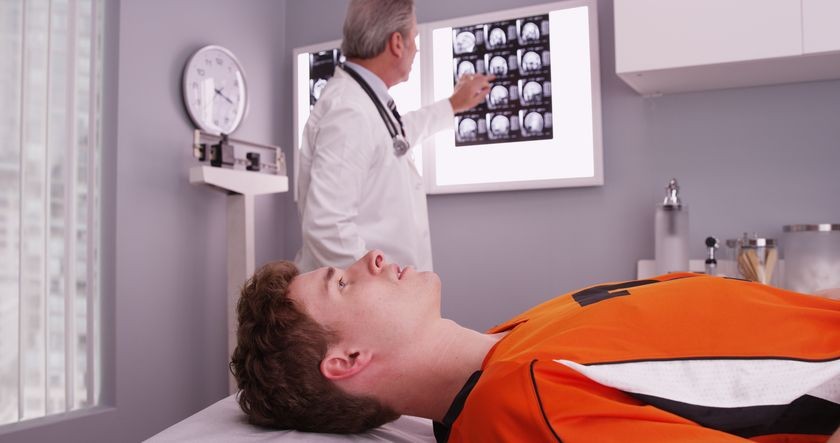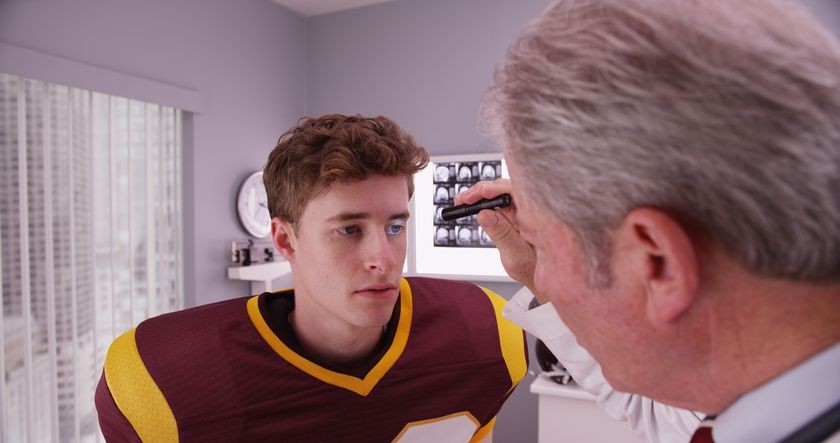
Sports Injury: What Kind of Tests Will Your Doctor Perform

Whether you are getting ready for the spring training season or just looking to boost your fitness level, sports injuries are a concern. Imaging is a critical diagnostic tool because the pictures tell a story about your body and what isn’t working right. Your doctor will likely order imaging tests in order to make a diagnosis and create a working care plan for most types of injuries. Consider some facts about sports injuries and the imaging tests that doctors order for them.
What are Some Common Sports Injuries?
A sports injury is an umbrella term usually for musculoskeletal damage that occurs when you workout or play. No matter what your game, it comes with risks. If you are a golfer, you worry about repetitive elbow strains. Runners must consider the possibility of knee or hamstring damage. Pitchers risk a career ending shoulder injury.
Some common problems seen by sports injury specialists include:
- Sprain – A sprain is a tear of connective tissue such the ligaments that connect one bone to the next one.
- Strain – A strain is the twisting or tearing of muscle or tendon.
- Joint damage – This would include dislocations or tears to tendons that support the joint.
- Fractures – Broken bone
- Concussive injury – A concussion occurs due to accelerated force on the brain. When you are hit in the head the brain slams against the hard interior of the skull. Concussions represent a real concern for certain contact sports like football. Multiple blows can cause permanent damage, especially when they occur sequentially. A football player that hits his or her head during a game should stop playing to prevent sequential blows.
Sports injuries may be chronic or acute, too. In other words, the pain in your elbow from playing tennis or the swelling in your knee after jogging may be a one-time thing (acute) or happen after every workout (chronic).
What Imaging Tests are Done for a Sports Injury
The testing ordered by the doctor will depend on many factors including your pain level and the extent of the damage. A simple image like an x-ray can rule out a bone fracture. It will show a joint dislocation or if any bone is torn away such as you would see with an avulsion fracture. This is a practical choice just to get an idea of the extent of an injury if the doctor suspects there is bone involved, but it offers little information about connective tissue problems.
In some scenarios, the doctor may opt for a CT, or computer tomography, to get a better view of bone tissue. A CT scan can locate tiny tears in bone that a traditional x-ray won’t pick up.
If the doctor suspects a muscular tear, the order will be for an MRI. The magnetic resonance imaging test offers the most detailed view inside the human body – all without exposing the patient to any radiation. The MRI is a practical option for spinal injuries, joint damage and muscular trauma.
The final imaging test your doctor may choose is the ultrasound. An MSK ultrasound provides a unique view of muscles, tendons, joints and ligaments in real time. This means the doctor gets to see them in action and get an idea of how movement affects them. The ultrasound can see things such as:
- Tears in connective tissue
- Fluid accumulation
- Inflammation of bursae or joints
- Hernias
- Dislocations
Since this test uses sound waves to create an image, it is quick and painless, too. Not everyone responds well to more complex testing procedures like the MRI or CT, so an ultrasound is an effective alternative.
When to See a Doctor
Do all sports injuries require medical evaluation and imaging? Not necessarily, but when in doubt, it is always best to see your doctor. Minor injuries usually respond well to home care using the RICE formula:
- Rest
- Ice
- Compression
- Elevation
The exception to this rule is a head injury. A hit to the head should be evaluated by a medical professional. There are approximately 200,000 sports-related concussions in the U.S. each year, according to the American Academy of Orthopaedic Surgeons. Even a minor hit can become a life-threatening injury if left unchecked.Pain is your body’s way of telling you something is wrong, so if you suspect you have a sports injury, see a doctor to get the proper tests done. Imaging gives the physician a way to see inside the body and make the right diagnosis.




